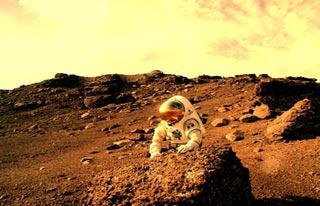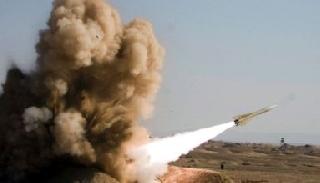
If Earth is the cradle of life, can its neighbour Mars too host it?
The question has bugged scientists since long. To find out the answer and unravel the mysteries of the Red planet, several spacecraft, including orbiters, landers and rovers, have journeyed to the planet. Those that have reached their destination have collected fascinating images and data of the planet and sent them back to Earth.
About 40 spacecraft have travelled to Mars since the 1960s, many of them ending in failure mid-way. The effort, nevertheless, continues.
The relative proximity of Mars and its Earth-like qualities makes the planet an approachable destination for scientists. Some of the major similarities the planet shares with Earth are its Solar day (24 hours, 39 minutes), changing seasons, a thin atmosphere and presence of water-ice.
Many scientists believe that Mars has hosted life in the past. Some even say that the planet still harbours life, the evidence of which is yet to be conclusively found.
The unmanned missions that have successfully landed on Mars have provided interesting clues about the planet, including presence of water in some form or the other, its geological and climatic structure and existence of microbial life in the past.
Encouraged by these clues, scientists now aim to send man to the planet.
“If the human race is to continue for another million years, we will have to boldly go where no one has gone before,” well-known physicist Stephen Hawking has said, suggesting that man should build colonies in Mars.
After exploring Moon, Mars is the next destination where man is setting its eye on.
While NASA has announced to send its first manned spacecraft to Mars in 2030, European Space Agency’s Aurora is taking shape to fly to the planet by 2020s.
Russia has also planned to send its cosmonauts to the Red planet. India too has wished to join the global endeavour for Mars exploration programme.
The Mars exploration mission, however, does not seem to be an easy undertaking given several risks and challenges involved in it.
While sending a spacecraft to Moon is relatively easy which is just three days away from Earth, a Martian mission, on the other hand, could take no less than six months. Such a lengthy mission will require not only large amounts of logistics but also the ability of humans to travel in space for such a long time without any health hazards.
For this, scientists have proposed to build a permanent space station on Moon which could be used as a base for flying to Mars.
The other obstacles a Martian mission could face would be to protect the astronauts from hazardous cosmic radiation and solar wind. Mars’ high gravitational pull and its thin atmosphere would be another hurdle for landing heavy vehicles there.
Even if man succeeds to land on Mars, how favourable the planet would be for him to survive there is also a big question mark. Along with a thin atmosphere, Mars has a very low temperature ranging from -63°C to -140°C. Also, no standing bodies of liquid water have been traced on Mars as yet.
Colonization of Mars could be possible by “terraforming” the planet, according to some scientists. This hypothetical concept proposes to modify the structure, climate, geology and other features of Mars so as to make it habitable for humans as well as for other terrestrial life.
Man leaving Earth and making Mars its permanent home has been a fascinating idea among many science fiction writers. The scientific community worldwide has accelerated its efforts to turn this imagination into a reality with the hope that it will succeed in its endeavours someday some way.
 Previous Article
Previous Article Next Article
Next Article












The Indian Air Force, in its flight trials evaluation report submitted before the Defence Ministry l..
view articleAn insight into the Medium Multi-Role Combat Aircraft competition...
view articleSky enthusiasts can now spot the International Space Station (ISS) commanded by Indian-American astr..
view article